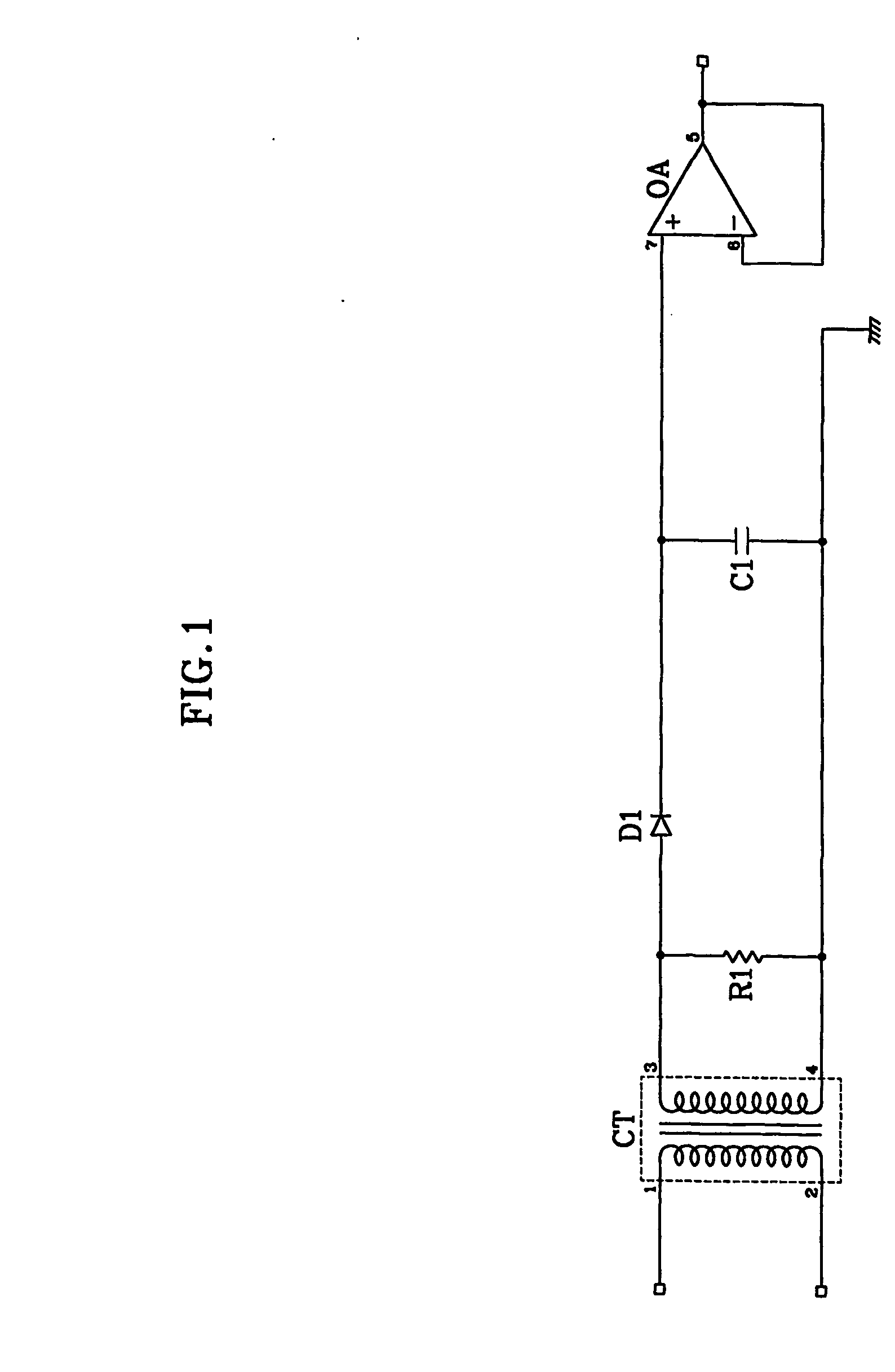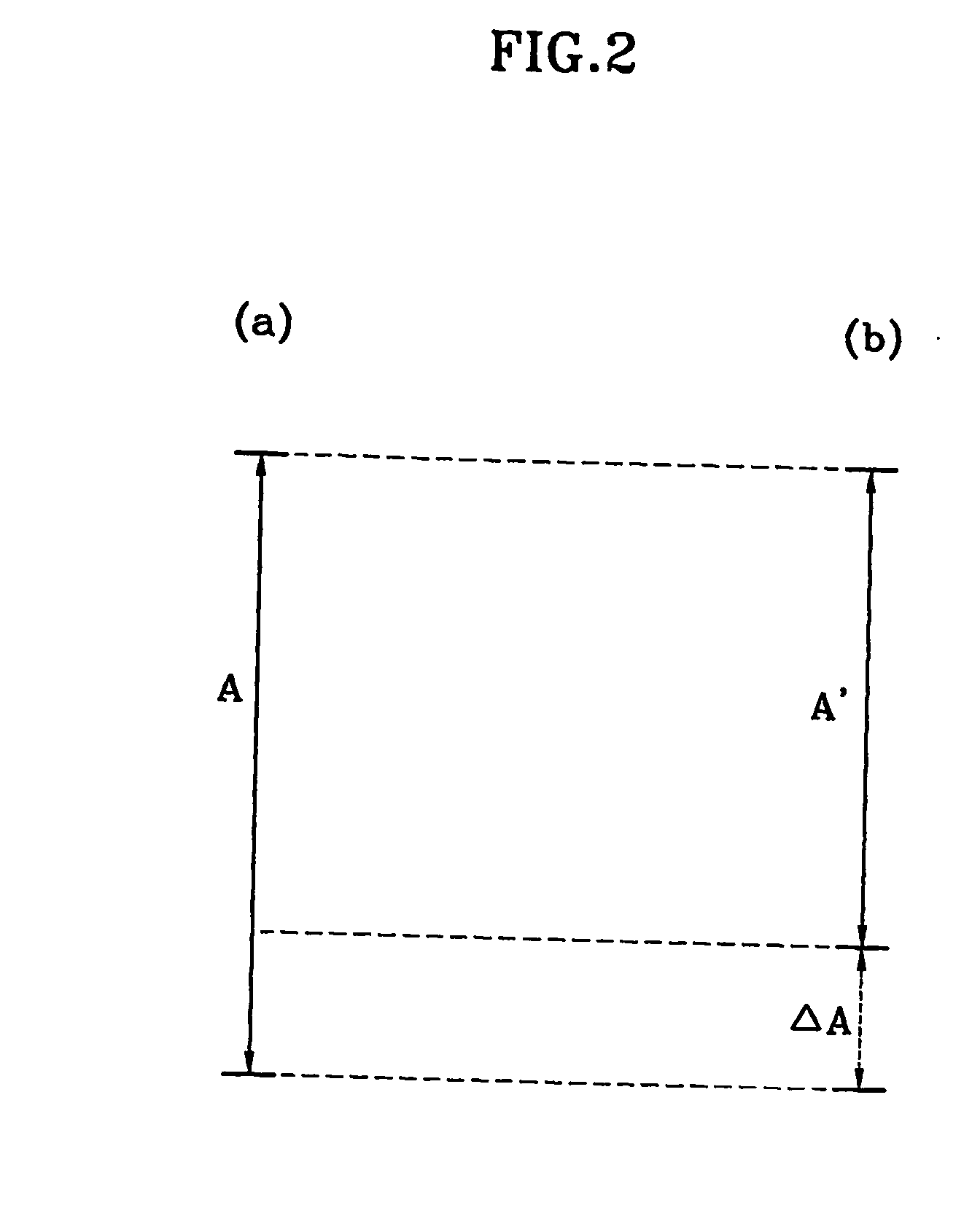Circuit for detecting electric current
a circuit and current detection technology, applied in the direction of electric variable regulation, process and machine control, instruments, etc., can solve the problem of error in the peak value of load current detected by the diode and the capacitor, and achieve the effect of improving the accuracy of load current detection and heightening the reliability of products
- Summary
- Abstract
- Description
- Claims
- Application Information
AI Technical Summary
Benefits of technology
Problems solved by technology
Method used
Image
Examples
first embodiment
[0029]FIG. 3 is a schematic drawing for illustrating a current detecting circuit according to the first embodiment of the present invention, where the current detecting circuit includes a current transformer (CT), a resistor (R1), a diode (D1), a capacitor (C1), an operational amplifier (OA) and a zener diode (ZD1).
[0030] The current transformer (CT) receives a load current and transforms same to a small current that is easy for measurement and outputs same. The resistor (R1) is connected to both ends (3, 4) of a secondary winding of the current transformer (CT) in order to set up an output voltage at the secondary winding of the current transformer (CT).
[0031] An anode of the diode (D1) is connected to one end (3) of the secondary winding of the current transformer (CT) and a cathode of the diode (D1) is connected to a non-inversion terminal (7) of the operational amplifier (OA). One end of the capacitor (C1) is connected to a cathode of the diode (D1) and the other end of the ca...
second embodiment
[0043]FIG. 5 illustrates a current detecting circuit according to the second embodiment of the present invention, where the circuit includes a current transformer (CT), a resistor (R1), a diode (D1), a capacitor (C1), an operational amplifier (OA) and a shunt resistor (R2).
[0044] The current transformer (CT) receives a load current, transforms same to a small current that is easy for measurement and outputs same. The resistor (R1) is connected to both ends (3, 4) of a secondary winding of the current transformer in order to set up an output voltage at the secondary winding of the current transformer.
[0045] An anode of the diode (D1) is connected to one end (3) of the secondary winding of the current transformer and a cathode of the diode (D1) is connected to a non-inversion terminal (7) of the operational amplifier (OA). One end of the capacitor (C1) is connected to a cathode of the diode (D1) and the other end of the capacitor (C1) is grounded.
[0046] The non-inversion terminal o...
third embodiment
[0060]FIG. 7 illustrates a current detecting circuit according to the third embodiment of the present invention, where the circuit includes a current transformer (CT), a resistor (R1), a diode (D1), a capacitor (C1), an operational amplifier (OA), zener diode (ZD1) and a shunt resistor (R2).
[0061] The current transformer (CT) receives a load current and transforms same to a small current that is easy for measurement and outputs same. The resistor (R1) is connected to both ends (3, 4) of a secondary winding of the current transformer in order to set up an output voltage at the secondary winding of the current transformer.
[0062] An anode of the diode (D1) is connected to one end (3) of the secondary winding of the current transformer and a cathode of the diode (D1) is connected to a non-inversion terminal (7) of the operational amplifier (OA). One end of the capacitor (C1) is connected to a cathode of the diode (D1) and the other end of the capacitor (C1) is grounded.
[0063] The non...
PUM
 Login to View More
Login to View More Abstract
Description
Claims
Application Information
 Login to View More
Login to View More - R&D
- Intellectual Property
- Life Sciences
- Materials
- Tech Scout
- Unparalleled Data Quality
- Higher Quality Content
- 60% Fewer Hallucinations
Browse by: Latest US Patents, China's latest patents, Technical Efficacy Thesaurus, Application Domain, Technology Topic, Popular Technical Reports.
© 2025 PatSnap. All rights reserved.Legal|Privacy policy|Modern Slavery Act Transparency Statement|Sitemap|About US| Contact US: help@patsnap.com



